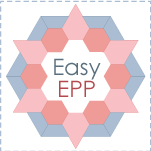Stitched Sunday Lesson one
'
are we ready? are we ready? can’t hear you…..
okay, so here we go.
Today we are going to start with the simple Straight stitch and running stitch. As stated last week there are two methods of stitching – the stab method or the ‘scoop’ method (my word) which is what I use and will show you – but both work – use what you prefer. Put some scrap fabric (with stabiliser applied) into your hoop to practise and learn.
Straight stitch
This is the most simple of stitches you can get! one up and one down…..
Bring you knotted threaded needle up at point A
Return the needle to the back at point B Pull thread to back until firm (but not so tight that the fabric pulls)
and there you have done your first straight stitch! – now this is really a stab stitch – one step at a time.
Now if you were doing a lot of single straight stitches you can use the scoop method. As you go down at B, bring the tip of the needle back up at the start of your next stitch.Always go back to the start side to begin your stitches - this gives a much nicer tension.
For this design I always started my stitches in the centre.
Cross Stitch
Now put two straight stitches on top of each other and you have a cross stitch.
Running Stitch
lots of straight stitches in a row with a gap in between
Bring your knotted threaded needle up at A
take it down at B and then scoop back up at A (when using the scoop method it is the finger sitting on the back of the hoop that is important - it needs to push the needle backup into the exact position it needs to be)
Pull through and have the thread tight enough so that it is sitting flat on the fabric BUT the fabric should not be puckered at all..
You may choose to do a row at once – as many stitches as you can fit onto your needle – this works best on straight lines –not so much on circles.Running stitch can be even – that is the length of the stitch is the same as the length of the gap OR
You can have a long stitch and a smaller gap – just make sure they are all even.
The length of the stitches depends somewhat on the design. In my patterns and iron on transfers my running stitch is printed as dashed lines so the length is determined for you. The length would need to be shorter on circular designs so that you get nice curves rather than spiky circles… the most important point is that they are all even.
Variations include whipped running stitch – you complete the running stitch first then with a contrasting thread you whip the running stitch. for whipping pass the threaded needle under a straight stitch, over the top and back under the next straight stitch.
Interlacing is another option. This time pass the needle down through one straight stitch and then up through the next one.
Some more examples of running stitch – used on appliqué here – it makes a good outline or accent stitch.
I have collected a lot more photos, ideas and inspiration on my Straight and running stitch pinboard – you can look and peruse here.
before we get onto our first project I must tell you how I end off a thread!
Bring the needle through to the back and run it under the closest stitch you can see. This will form a loop. Pass the needle through the hoop and pull tight. I like to do this twice just to make sure its tied securely. Trim the end.
Have you mastered these stitches – time for homework!
We are going to be making pages as reference to put into our finished stitch book at the end. Now of course you don't have to do these but the simple little designs will be posted each week. You may use them for something completely different – i don't care, but I'd like to see what you do with them.
So you need to cut your page fabric into pieces 7” x 8 1/2”. Trace the design centrally onto them using a lightbox and then attach your chosen stabiliser.
into the hoop and away we go. download the pattern here.
I have stitched my words in backstitch –which you haven’t learnt yet, you could stitch it with a running stitch or a pigma pen!
hugs and happy stitching!
Helen
'

Items 1 to 6 of 11 total